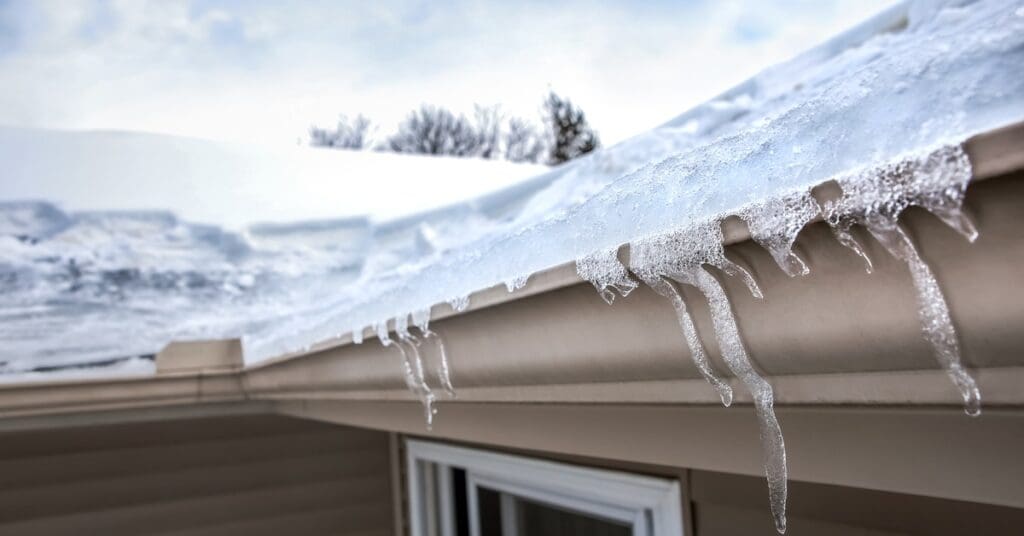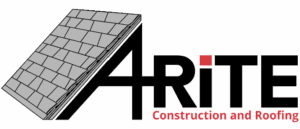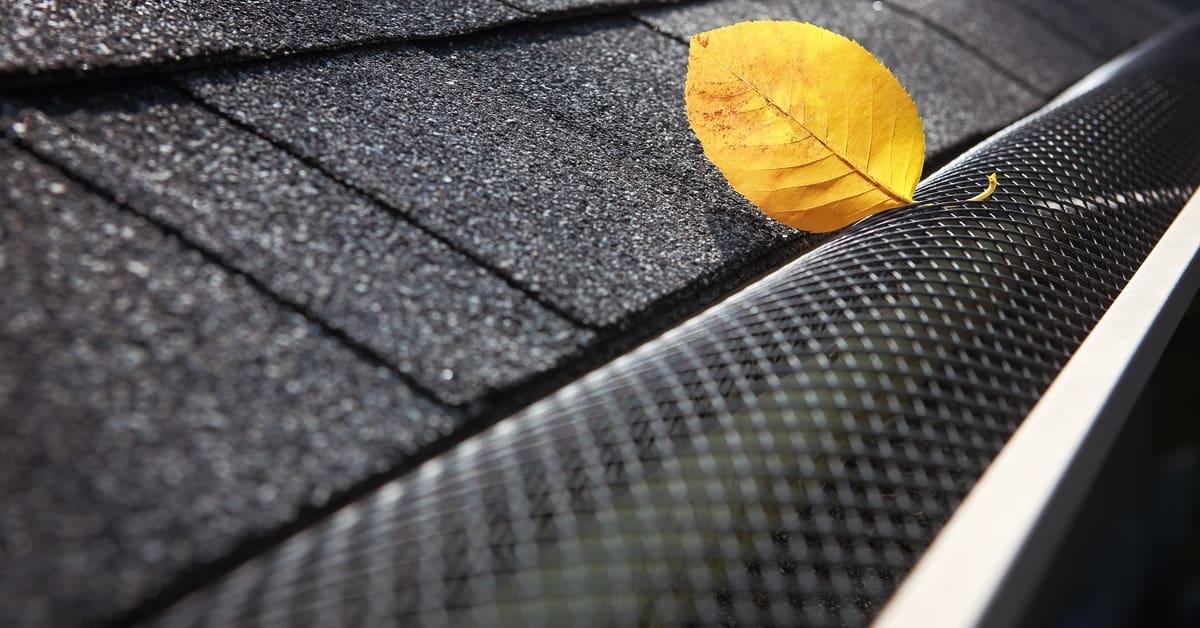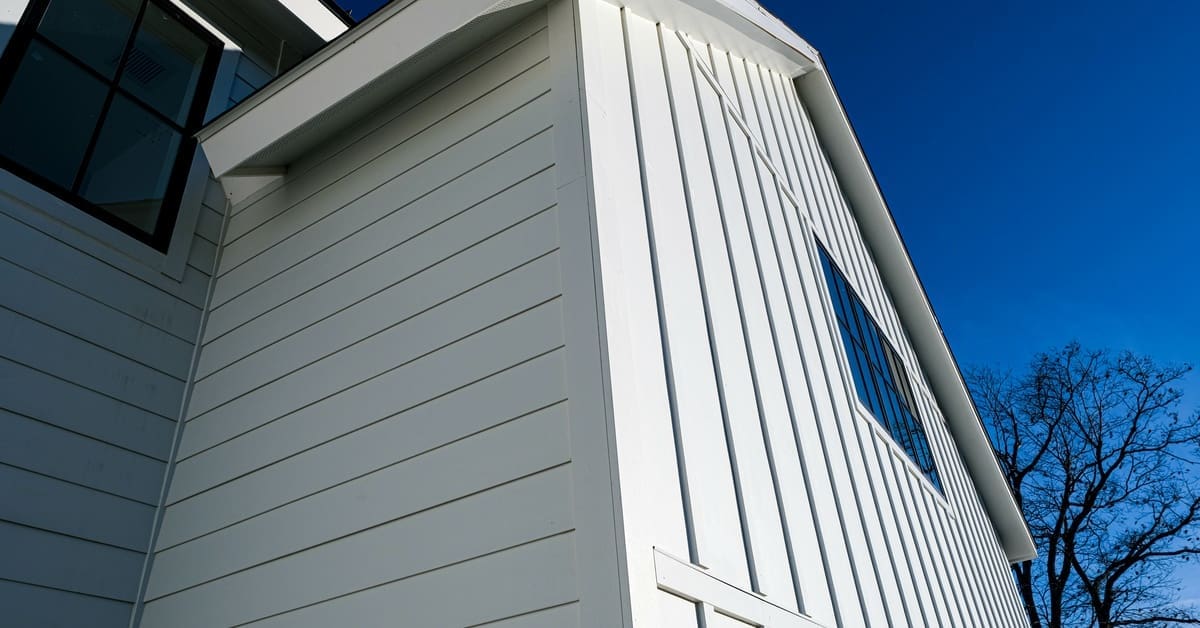Fall in Wisconsin brings crisp air, golden leaves, and—for homeowners—a growing list of outdoor chores. While raking, mulching, and winterizing often get top billing, clogged gutters can become one of the season’s most expensive oversights.
We’ll explore the benefits of gutter covers during fall and winter and why they’re one of the smartest investments homeowners can make as the seasons shift.
Avoiding Overflow and Structural Stress
When leaves, pine needles, roof grit, and seed pods collect inside a gutter, it doesn’t take long before water flow slows or stops altogether. During peak leaf drop in October and November, it only takes a handful of leaves in a downspout to cause visible overflow! Once water spills over the sides, it begins following unintended paths: behind fascia boards, beneath siding, or straight into the soil that surrounds the foundation.
Unfortunately, damage isn’t always immediate. Waterlogged fascia can take weeks to show signs of rot, and soil erosion near the foundation may not reveal itself until freeze-thaw cycles expand minor cracks. Meanwhile, the physical strain on the gutter system begins to mount.
Wet leaves and compacted debris are deceptively heavy—up to 20 pounds for every linear foot. Over time, this weight pulls gutters away from their hangers, distorts their slope, and causes them to sag or separate from the roofline.
Gutter covers help by preventing most debris from entering the channel at all. They maintain consistent water flow and reduce the likelihood of structural stress caused by clogs and excess weight.
Controlling Freeze-Thaw Gutter Damage
Autumn clogs become winter hazards when freezing temperatures set in. When standing water is trapped inside a gutter, it begins to freeze, thaw, and refreeze, often multiple times per week. In Wausau, where temperatures frequently dip below 32 degrees Fahrenheit from November through March, that cycle becomes a near-daily occurrence. The expansion and contraction gradually widen seams, strain brackets, and deform the gutter’s shape.
Even seamless box gutters aren’t immune. While they eliminate joints, they still rely on unobstructed flow to prevent buildup. Ice accumulation along the gutter edge can block meltwater runoff, forcing it to back up under shingles and into the roof decking. Moisture can linger for weeks, weakening insulation and encouraging the growth of mold.
By keeping debris out of the gutter in the first place, covers reduce pooling water and the ice formations that come with it. The result is a cleaner, more functional gutter system that stands up better to Wisconsin’s long, cold season.

Reducing Ice on Walkways and Drives
Overflowing gutters don’t just damage the structure of your home; they create dangerous conditions where you walk. During snowmelt or winter rainfall, blocked gutters spill water over the sides, which often drips onto driveways, sidewalks, or porch steps. In freezing conditions, runoff turns into slick patches that remain long after the precipitation ends.
Small overflows can create thin, nearly invisible layers of ice that are easy to overlook, especially in shaded areas that receive little sunlight. These spots refreeze quickly overnight and may linger for days during cold snaps. Homeowners often resort to applying salt daily or chipping away ice manually, both of which are time-consuming and hard on surfaces.
Gutter covers reduce the amount of overflow reaching the ground in the first place. With better flow through downspouts and fewer debris clogs, water exits where it should—away from entry points and footpaths, keeping high-traffic areas safer throughout the season.
Keeping Water Away From Your Home
Come wintertime, your home still needs a clear, unobstructed path for water to exit the roofline and drain away. When gutter systems are blocked, water spills over the sides and collects along the foundation, behind siding, or near basement windows. Over time, this leads to soil erosion, freeze expansion near the base of the home, and eventual water intrusion.
This kind of damage, though, rarely happens at once. Instead, small cracks form in the foundation, and moisture begins to seep into lower levels during snowmelt or heavy rainfall. In homes with finished basements or older masonry, that moisture can then lead to stains, odors, and long-term structural concerns.
Luckily, gutter covers help reduce this risk by promoting uninterrupted flow through the downspouts, guiding runoff several feet away from your property’s structure with the appropriate extensions or splash blocks already in place.

Blocking Pests Before They Settle In
As temperatures drop in late fall, small animals and bugs begin their search for warm, protected spaces to build nests. Regrettably, uncovered gutters provide an ideal entry point. Birds, squirrels, and mice can gain access to rooflines through clogged gutters filled with dry leaves and nesting material. Once inside, they may move into the soffit, attic, or walls of the home, bringing noise, mess, and potential damage with them.
Insect problems often follow. Stagnant water in clogged gutters is a reliable breeding ground for mosquitoes and can attract wasps or ants looking for moisture and shelter. By reducing organic debris and eliminating stagnant pools, gutter covers make the space less appealing to animals and insects alike. That small barrier at the top of the gutter can help by keeping the perimeter of your home less inviting throughout the cold-weather months.
Cutting Down on Winter Gutter Work
Cleaning gutters can be dangerous. Climbing ladders in freezing temperatures, particularly on snow-covered ground or icy driveways, increases the risk of falls. Even if safety isn’t a concern, cold-weather cleanouts are rarely effective. Frozen debris can be difficult to remove, and water trapped beneath the surface often goes unnoticed.
In Wausau, it’s not uncommon for homeowners to need gutter cleanings every four to six weeks during autumn. Once winter sets in, scheduling gutter cleaning services becomes more challenging, more expensive, and less productive, especially when crews are dealing with frozen blockages.
Gutter covers reduce the frequency of seasonal cleanings during those cold months when accessibility becomes more of a challenge. Fewer cleanings mean fewer disruptions, lower maintenance costs, and less risk.
Protecting Your Gutter Investment
The benefits of gutter covers during fall and winter extend beyond water flow and home protection; they preserve the integrity of the gutter system itself. Seamless box gutters are built for durability, but clogs, weight stress, or freeze-thaw pressure can damage high-quality materials. Installing covers minimizes those risks, giving the system a longer service life with less hands-on maintenance.
If you’re ready to get more from your gutters this fall and winter, reach out to us. At A-Rite Construction, we install and maintain seamless box gutters that withstand Wisconsin’s toughest weather. When you’re looking for gutter repair services before the season changes, A-Rite Construction is here to help.




